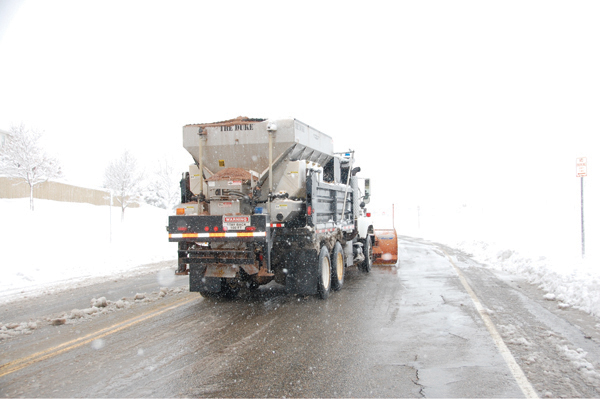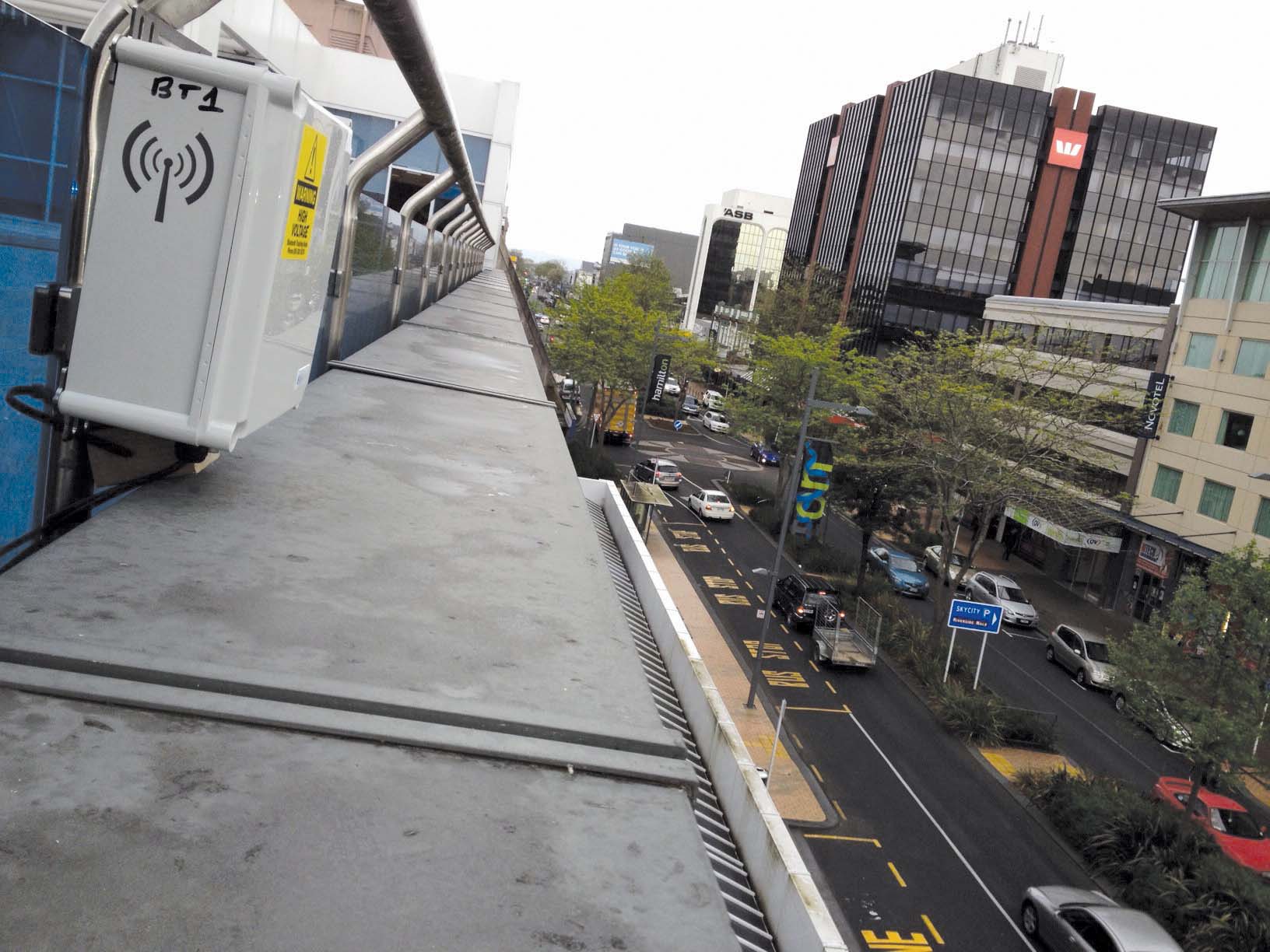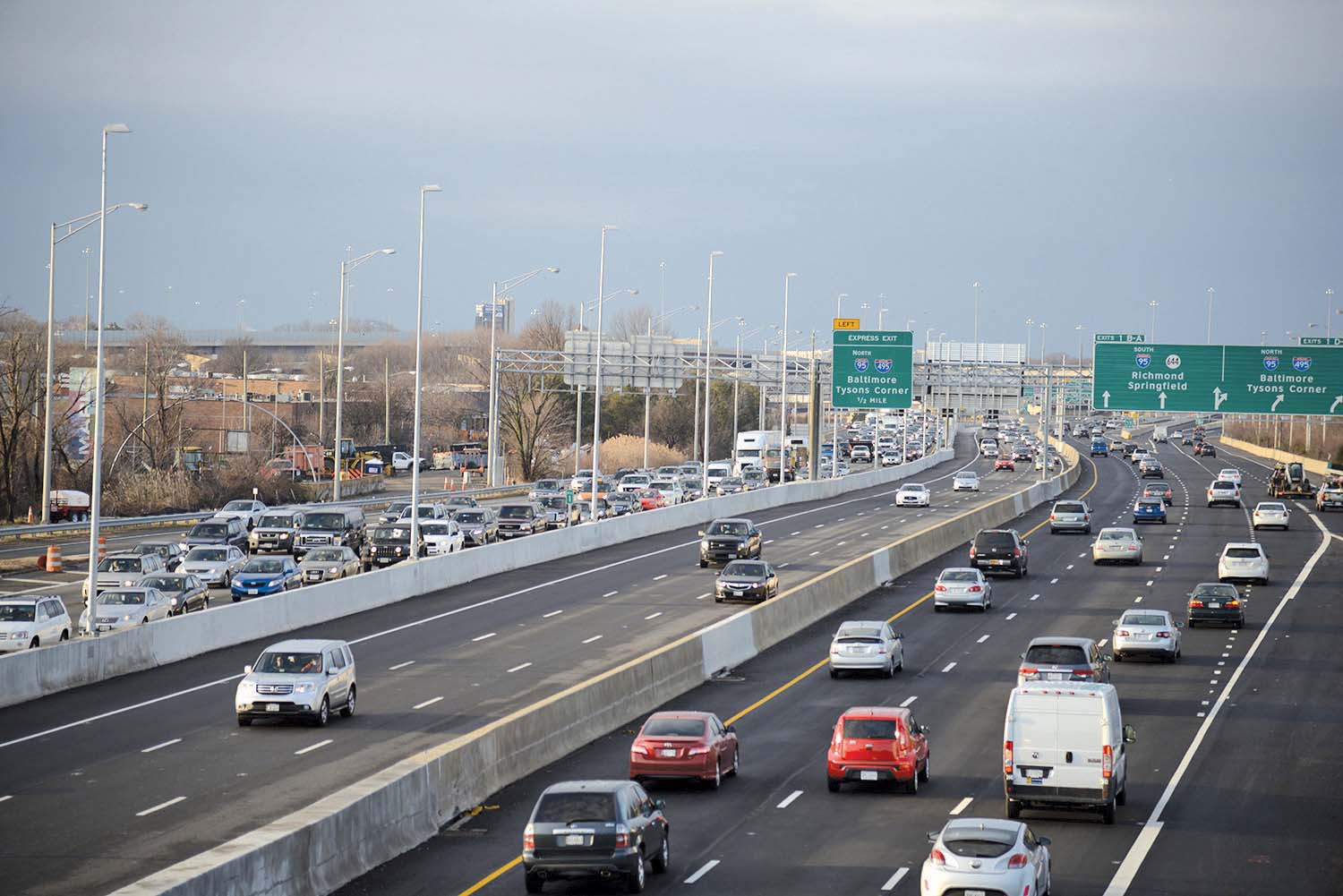
Road Weather Information Systems (RWIS) have now been around for over 30 years and it is widely accepted that these systems provide critical information which allows roads authorities to more efficiently plan and execute their winter maintenance duties. In fact, RWIS have proven so successful that there has been a steady movement towards authorities operating the systems all year round in order to provide information for summer maintenance activities. In addition, the realisation that weather has a huge effect upon operational activities has led to a wide expansion of RWIS in the ITS arena.
Almost inevitably, more than three decades of development and operational use have resulted in RWIS becoming more accurate and sophisticated. Examples of this include the addition of new technologies and services; for example, in the past decade we have seen the introduction of cameras, non-intrusive sensors and more recently Maintenance Decision Support Systems (MDSS).
There can be little doubt that all of these advances are providing huge benefits for both the road operators and maintainers. There are also significant gains for the end user in terms of increased road safety, better travel times and, ultimately, greater peace of mind.
Unfortunately, there can also be little doubt that road weather remains the poor cousin to, for example, aviation weather in terms of acceptance and investment. There are mandatory requirements for strictly regulated weather observations and forecasts within the aviation industry with an obvious cost that nobody argues with.
However, most of the professionals within the road weather world, and here we must include both the vendors and the system users, are constantly battling to convince those holding the purse strings that RWIS is indeed a worthwhile investment.
RWIS and MDSS
Before going any further, it is perhaps worth expanding a little on just what the differences are between RWIS and MDSS 'Road Weather Information System' is the traditional name for a collection of road weather stations at various point locations on a road network. These report the information they gather back to a central location. The term describes pretty much a basic weather monitoring and reporting system but over the years we have seen many enhancements, such as blending the road weather station data with numerical weather prediction models to provide a tailored road forecast which includes parameters such as surface condition and surface temperature. Other examples of enhancements include the provision through the RWIS system of forecast thermal maps, which are driven by road weather station observations in addition to forecasts to provide the user with an overview of the pavement temperatures across an entire road network.
It would be fair to state that these systems are already providing 'decision support'.
'Maintenance Decision Support System', meanwhile, has become the primary name for an RWIS which provides treatment recommendations to the user. For example instead of a traditional RWIS forecast stating, to give an example, that 'Frost will start to form at 11pm on Highway 1', an MDSS system may state that the user is recommended to commence spreading salt at a given location at 10pm and at a rate of 10g/m2.
The above is an over-simplification, but it should serve to provide an idea of the basic differences.
Known benefits for road managers
Roads authorities have reported that MDSS and RWIS have allowed them to reduce their de-icing material costs by up to 40 per cent, resulting in associated reductions in traffic accidents of as much as 50 per cent. There is a slew of information on the various benefits, both direct and indirect, that roads authorities and their regions can attain. However, until now, it has been difficult to make a simple calculation that allows authorities to understand the potential effects of an RWIS or MDSS installation. This in turn has made it difficult for many authorities to justify the outlay for an RWIS or MDSS or, indeed, to secure the funding required to cover either the continued running costs or maintenance.
Quantifying value for road managers
In order to provide an objective approach for road authorities and enable them to calculate benefits, Vaisala has created a tool called the Road DSS Calculator (RDC) that allows them to enter infrastructure and cost information. The embedded algorithms produce calculated savings, based on referenced study findings, which provide a breakdown of all direct and indirect cost savings both to the road authority and the local community. The cost savings are an obvious requirement for the purse-string holders but the RDC also provides non-financial information such as safety aspects, with the potential accident reductions, and environmental issues, such as potential carbon and pollutant reductions. This will allow authorities to demonstrate potential and real benefits to all stakeholders, which will hopefully educate the wider audience of the necessity to invest in RWIS and MDSS.
The RDC is designed to be extremely simple to use. All the user has to do is enter a number of easily accessible parameters which then define the road network size, local economy and climate.
Figure 1 below shows the RDC input page where the user first selects their local currency and provides local information (in the green value column).
| Contact Name Organisation Phone Number Date: |
I C Gale Springfield County ICGALE@YOOHOO.WEB 123.456.7890 6/12/2011 |
||
| Category |
Description | Value | Units |
| General Information |
Currency Winter Maintenance Budget Number of RWIS Stations Managed Area Population |
EUR 25,000,000 12 320,000 |
EUR Stations Persons |
| Maintenance Network Information |
Number of Weather Events per Year Treatment Distance per Event Cleanup Distance per Event Number of Routes Number of Maintenance Vehicles Dry Materials Use per Event (Tons) Wet Materials Use per Event (Liters) |
60 530 - 19 22 100 5,000 |
per Season Lane Km Lane Km Routes Veh Tons/Event Liters/Event |
The input data is then processed through a series of algorithms in order to calculate the benefits that the user can expect to realise by adopting an MDSS solution. Many of the algorithms are based on standard assumptions, such as the average cost of a road fatality, however users have the opportunity to fine-tune and change these assumptions should they wish or need to. The calculated variables utilise assumptions derived from a wide range of published materials, such as RWIS cost-benefit ratios. These assumptions are being addressed in a White Paper that is soon to be published by Dario Atallah and Paul Bridge from Vaisala, Inc., Boulder USA and Mark DeVries from McHenry Public Works Department, Illinois, USA.
Figure 2 shows the resulting benefits that the road authority can expect to make directly, which are specific to the user's input.
| Summary |
EUR | Hours | |
| RoadDSS Benefits |
Labour Time Savings Material Savings Maintenance & Wear Savings Increased Revenue Total Efficiency Savings Percent of Budget Savings Average Savings per Region RWIS increased value per station |
95,838 247,374 240,984 - 584,195 2.34% 116,839 48,683 |
3,150 3,150 EUR EUR |
| Customer Benefits | Yearly Benefit | Value | Units |
| Efficiency |
Decision Time Cost Savings Treatment labour Usage Cost Savings Reduce Stress Related Absences Costs Dry De-Icing Materials Cost Savings Wet De-Icing Materials Cost Savings Cleanup Labour Cost Savings Vehicle Maintenance Cost Savings Fuel Consumption Cost Savings Wear Infrastructure Cost Savings IT HW Cost Savings IT Labour Cost Savings Increase Revenue from Toll Roads Total Efficiency Related Savings per Year |
7,820 70,844 5,875 209,472 22,918 - 60,449 12,865 180,535 2,119 11,299 - 584,195 |
EUR EUR EUR EUR EUR EUR EUR EUR EUR EUR EUR EUR EUR |
| Publicity |
Reduction of # Complaints Costs Reduction of Litigation Costs Total Publicity Related Savings per Year |
5,649 197,119 202,768 |
EUR EUR EUR |
| Customer Benefits | Yearly Benefit | Value |
Units |
| Efficiency |
Reduction in Time Making Decisions Reduction in Operator Treatment Driving Time Reduction in Stress Related Absences Hours Reduction in Dry De-Icing Materials Use Reduction in Wet De-Icing Materials Use Reduction in Cleanup Labour Time Reduction of Number of Required Operation Vehicle Reduction of Operation Labour Numbers Reduction in Driven Km Reduced IT Labour Hours Yearly Increase of Toll Vehicle During Events |
138,42 2,508 104 3,900 195,000 - 5 7 13,992 400 115,200 |
Hrs Hrs Hrs Tons Liters Hrs Vehicles People Km Hrs Vehicles |
| Publicity |
Reduction in Numbers of Complaints Reduction in Number of Lawsuits |
800 2 |
Complaints Lawsuits |
In addition to the direct savings that the road authority can make, there are additional community benefits that result from MDSS, as can be seen in Figure 3.
Whilst it is appreciated that there are many areas for potential differences in true savings, Vaisala has deliberately taken a very conservative approach in its calculations, especially in the community savings, which are often totally overlooked when RWIS/MDSS costs are evaluated. It is hoped that this tool will ease the pain or procurement for many who already know the true value of RWIS/MDSS and whilst it is impossible to truly measure peace of mind, at least it is possible to establish a basis for more objective measurement of benefits; there are a number of other benefits that arise from RWIS and MDSS, which the imminent White Paper will address. By the end of summer 2011, Vaisala, Inc. expects to offer use of the tool via an interactive portal on its public website
| Community Benefits |
Yearly Benefit |
Value | Units |
| Safety | Accident Costs Savings Fatality Costs Savings Total Safety Related Savings per Year |
4,598,229 13,999,312 18,597,541 |
EUR EUR EUR |
| Mobility | Traffic flow Local Economy Losses Reduction Total Community Related Savings per Year |
104,085,283 104,085,283 |
EUR EUR |
| Environment | Pollution Cost Reduction Total Environmental Related Savings per Year |
1,405,095 1,405,095 |
EUR EUR |
| Community Benefits | Yearly Benefit |
Value | Units |
| Safety | Reduction in Number of Accidents Reduction in Number of Fatalities |
26 5 |
Accidents Fatalities |
| Mobility | Average Speed Increase Increase of Number of Vehicles on the Road Community Time Savings due to Optimised Treatment |
33 16,000 7,613,217 |
KPH Vehicles Hrs |
| Environment | Road Treatment Materials reduction (Water table) Greenhouse Gas Creation Reduction Polluting Emissions Reduction |
3,900 28,381 332 |
Tons of Material Tons CO2 Kg NOx/VOC/CO |









